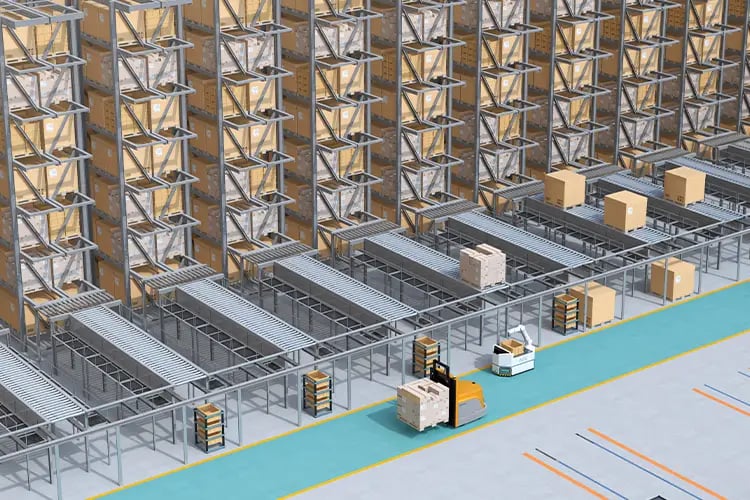
If you are considering adding robotic solutions to automate your warehouse or factory, you might be interested to know which supply chain processes are at the forefront of robotization.
Today’s ingenious robots are flexible and extend to cover a wide variety of applications. Pallet handling is still one of the most crucial and repetitive tasks manual operators are equipped with. These tasks are repetitive, and operators often end up utilizing time and resources for simple lateral movements. That being said, these are the top 5 AGV applications within warehouses that create maximum value.
1.Tugging Applications
Tugging applications, also known as milk runs in production, is one of the most important applications in production. These applications are highly repetitive and often rely on manual operations to carefully maneuver and deliver goods to different areas. This makes it one of the top workflow which has been driven into automation. Using an AGV (tugger trucks), plants today can optimize their material delivery flow safely and also make sure it can run continuously. To make it even more autonomous, AGV solution providers are able to offer you an additional option of auto-hitch and auto-unhitch: to autonomously remove the linkages between the machine and the material cart(s)/trays.
2.Interface with conveyors to pick/drop onto buffer lanes
A key demonstration of the ease of installation and flexibility of today’s AGV system is the ability to integrate into existing operating conditions. Today’s AGVs can create a connected interface with conveyors and pick/drop pallets using barcode scanners, lasers, etc and drop them off to the buffer lanes. By essentially creating these cobotics systems, warehouses today are not only able to streamline your process flow but also blend in with your current operations, a trait that has pushed multiple warehouses to embrace robotic trucks.
3.Storage/Retrieval of a specific pallet number from high racks
A crucial operation in today’s warehouses is the storage of materials or pallets on high racks. Warehouses rely on the operator’s expertise to carefully maneuver the manually operated material handling equipment and perform the task. In addition to the consumption of additional time and diversion from the operator’s main duties, these tasks are repetitive and often limited in terms of capabilities. To overcome these, additional trucks have to be deployed, thereby increasing operating costs. This is why automation is preferred. By deploying AGVs, operators are able to focus on other high-value tasks like sorting/packaging, etc. With the help of dynamic slotting, AGVs are also able to make the most of racking space ergonomically for growing demands, and availability uptime at 98%, they are ready to handle future scalability.
4.Bringing back empty pallets
An important part of logistics operations is the requirement of operators to bring back the pallets that have been taken in or moved. These pallets are then stored in a commonplace so that they can be used again. This low value-added task often takes a portion of the operator’s working time, and thus provides a good seed for automation. By deploying AGVs, warehouses can now not only transfer loads to different stations but also bring back empty pallets.
5.AMRs
Keeping tabs with industry trends, AMRs are also gaining popularity in terms of material movement in warehouses. They are free-flowing, and often used in tandem with an operator’s tasks. Ideal for low-level picking or handling processes, AMRs are increasingly requested for their ease of operation and quick implementation.
* Note : AGV = Autonomous Guided Vehicles







